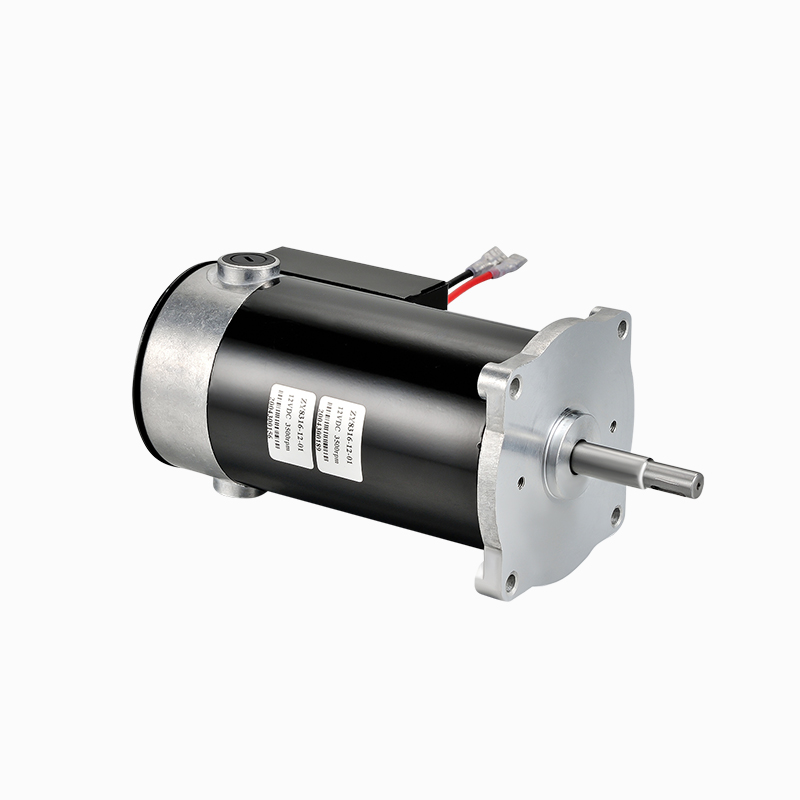Call us
+86-18023576732
+86-0579-89008006
Fax: +86-0579-82206899
Electric motors are designed to provide mechanical energy across a wide range of operating speeds, and one of the important considerations in system design is how they behave when running at low speeds. The Permanent Magnet DC Motor has long been valued for its high torque density, straightforward control, and relatively compact structure. Yet, when operating at low speeds, its stability characteristics come into question. Engineers and system integrators must examine whether the motor can maintain consistent torque, avoid excessive vibration, and ensure smooth rotation to meet application requirements.

Torque Characteristics at Low Speeds
A defining feature of low-speed operation is the balance between torque production and current input. At lower speeds, the back electromotive force decreases, meaning current flow becomes more influential in determining torque output. This allows the motor to generate substantial torque, but it also raises the risk of instability if the current is not regulated carefully. In well-designed systems, the motor demonstrates stable torque output with minimal fluctuations. However, in cases where load demand varies abruptly, torque ripple may become more noticeable, potentially influencing precision applications such as robotics or positioning systems.
Impact of Mechanical and Electrical Losses
Mechanical losses, such as friction and windage, are relatively constant regardless of speed, while electrical losses are influenced by the magnitude of current required. At very low speeds, mechanical losses take on greater significance in relation to the motor’s overall power output, which can reduce apparent stability. Furthermore, commutation becomes more critical because current switching between windings occurs less frequently. Poor commutation design or worn brushes may cause uneven torque pulses or slight jerks, which in turn compromise the perception of smooth operation. Therefore, maintaining the motor in a suitable condition is essential for achieving reliable low-speed performance.
Influence of Control Strategies
Modern control techniques have significantly improved motor stability at lower speeds. Pulse-width modulation, closed-loop speed control, and torque feedback mechanisms are commonly used to ensure steady performance. By monitoring and adjusting current in real time, these systems mitigate torque ripple and allow smoother rotational motion. This is particularly important in applications requiring high precision, such as conveyor drives, small-scale automation equipment, or medical devices, where even slight instability can have significant consequences. Thus, the effectiveness of low-speed stability often depends not only on the motor design itself but also on the sophistication of its control system.
Application-Specific Considerations
Different industries demand varying degrees of low-speed stability. For instance, in material handling equipment, slight torque fluctuations may be acceptable as long as overall power delivery remains sufficient. On the other hand, in servo-driven robotic arms, even instability can reduce accuracy and efficiency. Environmental factors, such as operating temperature and load consistency, also play a role. When motors are subjected to frequent start-stop cycles at low speeds, additional stresses may arise, highlighting the importance of robust design and appropriate thermal management. By considering the specific application environment, engineers can evaluate whether a given motor’s low-speed characteristics meet the operational requirements.
The stability of a motor during low-speed operation is a multifaceted issue influenced by torque characteristics, mechanical and electrical losses, control strategies, and the nature of the application itself. The Permanent Magnet DC Motor is capable of stable performance under low-speed conditions when properly designed, controlled, and maintained. However, without adequate regulation or if mechanical wear is present, instability may manifest in the form of torque ripple, vibration, or uneven rotation. A comprehensive understanding of these dynamics enables engineers to tailor systems that deliver both reliability and efficiency, ensuring that motors fulfill their intended roles across a wide spectrum of applications.
Contact Us